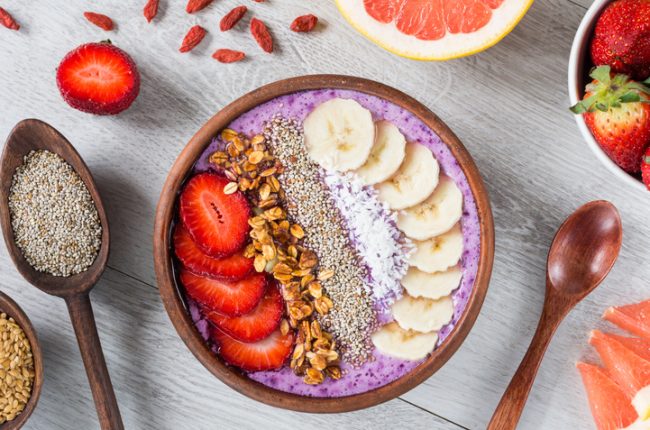Touted as the champion of the superfoods, açai, a purple berry that hails from the Brazilian rain forest, is certainly enjoying its day in the sun. Superfoods are defined as nutrient-dense substances that contain healthy antioxidants, amino acids, essential fatty acids and fiber—all of which açai (pronounced ah-cye-EE) possesses in spades.
Açai first became commercially available in the U.S. in 2000. It took awhile for Americans to embrace this exotic fruit; but since 2004, açai ‘s growth has been explosive, making its way into everything from nutritional supplements to cereal, jams, smoothies, beverages, Popsicles, wine and even skin creams.
2008 was açai ‘s banner year: 53 new food and drink products containing the fruit were introduced in the United States, with sales exceeding $106 million, according to SPINS, a market research firm specializing in natural products. But in 2009, açai ‘s halo was slightly tarnished by controversies about its effectiveness for weight loss.
Tabloid-style slimming claims aside, açai boasts an impressive range of benefits in its portfolio: Studies have suggested its potential as a powerful antioxidant and overall supporter of health, from digestive to heart to immune.
One study published in the September 2008 issue of the Journal of Agricultural and Food Chemistry involved volunteers who consumed a single serving of açai juice or pulp. Researchers measured a short-term increase in the antioxidant capacity of the volunteers’ blood.*
Açai ‘s unique benefits
Anyone who has tried an açai drink will notice its distinct taste—simultaneously fruity and chocolaty. The taste is actually a reflection of its unusually diverse nutrient profile, points out Stephen T. Talcott, PhD, associate professor of food chemistry at Texas A&M University. Talcott is one of the berry’s foremost researchers and lead author of the above study.
Açai’s most dominant claim to fame is that it is one of the most potent fruits on the ORAC (Oxygen Radical Absorbance Capacity) scale, a measure of antioxidant power. The fruit’s predominant antioxidants, called anthocyanins, are the same compounds that give grapes and red wine their many health benefits and rich purple color. Açai also has a variety of antioxidants that aren’t found in other fruits.
But reducing açai to the sum total of its antioxidants is a common mistake, says Talcott. The fruit’s true heroes, he says, are its polyphenols. Açai is also one of the only fruits that naturally contain fat and protein. In terms of nutrient power, the acai berry is like a combination of a blueberry and an olive, Talcott says.
Açai ‘s oil is packed with omega-9 fatty acids—which, like their cousin omega-3, can promote healthy cholesterol and inflammatory response. The fruit also contains a variety of health-supporting carotenoids, including beta-carotene and lutein. Additionally, Talcott says açai is a great source of phytosterols, which help promote the health of the cardiovascular and digestive systems.*
If that weren’t enough, a highly overlooked aspect of açai is its low sugar content. “For this reason, unsweetened açai is a great addition to fruit juices,” says Talcott, “since it adds a lot of nutritional properties without appreciably adding to calorie intake.”
*These statements have not been evaluated by the FDA. These products are not intended to diagnose, treat, cure or prevent any disease.

